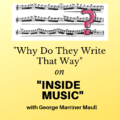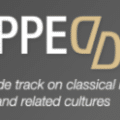May 30, 2011
The Elephant in the Room
My last entry focused on concert hall acoustics and their possible impact on attendance at symphony orchestra concerts. Today I want to address the ‘elephant in the room.’
A good friend who regularly listens to classical music and a trained amateur musician said: “I stopped going to the New York Philharmonic years ago.” “Why?” I asked. “Because I couldn’t stand the repertoire!” he replied. His ‘unsubscription’ occurred during the Pierre Boulez era as the Philharmonic’s music director. While serving as assistant conductor of the New Jersey Symphony Orchestra I watched, incredulously, as more than a few people walked out of the hall to the opening strains of Stravinsky’s Le Sacre du Printemps. It was 1979 – 66 years after the premiere of Le Sacre – and some people still found this score impossible to sit through.
As a former member of the Louisville Orchestra, an ensemble with a history of championing contemporary music and, sadly, currently under Chapter 11 bankruptcy protection, I became quite comfortable playing new compositions. I do vividly recall the tepid applause that often followed the premieres of many of these pieces. However, I personally found the process of playing and recording new music exciting and stimulating. I feel fortunate to have conducted recordings of the music of 21st and 20th century composers Frank Ezra Levy and his father Ernst with the Polish National Radio Symphony Orchestra, another ensemble with an abiding commitment to new music.
I would never advocate that orchestras abandon new music. Nor do I think they should stop programming dissonant, old repertoire such as Bartok’s Miraculous Mandarin. I believe new art in all media must be encouraged and supported. But think about this. Popular composers and performers – ever since that moment when classical composers took the leap away from tonality – have never released continuously dissonant pop songs. What sort of careers would Frank Sinatra or Beyonce have had if they had recorded such material?
There are those who believe human beings are genetically programmed for tonality and, on some primal level, incapable of processing continuous dissonance. If you wish to pursue this discussion, some of the latest thoughts from the scientific community on the subject may be found in Elena Mannes’s fascinating new book, The Power of Music (Walker & Company).
One last anecdote. I was in Carnegie Hall one evening eagerly awaiting a performance by the Vienna Philharmonic. Seated next to me was a young couple in their late 20’s who announced to me that this was their very first symphony orchestra concert. The program began with a work by Anton Webern. After the muted applause, the young man next to me turned and whispered: “Is it always like this? I think we’ll leave.” I whispered back: “Since it’s your first concert, why not stay for Mahler’s Symphony No. 1 on the second half? I think you’ll like it.” They did and, despite the dissonant passages to be found in Mahler’s 1st, were swept away by the incredible power of this music.
The ‘elephant in the room’ is not dissonance in music. Dissonance has musically been with us for thousands of years! In my opinion the ‘elephant in the room’ is the apparent inability of many people to tolerate continuous dissonance. Even many seasoned concertgoers just can’t deal with it. Some individuals avoid symphony orchestra concerts when they have the slightest suspicion such a work may be played. How many people like my friend have just stopped going? If in more than a century audiences haven’t acclimated to continuously dissonant music, when do we expect the breakthrough moment will arrive?
Today, when many American professional symphony orchestras are fighting for their very survival and hoping to maintain – let alone increase – audiences, they must come to terms with ‘the elephant in the room.’ Performances of new tonal works will probably be welcome, and many orchestras have been programming such compositions.
Perhaps The Discovery Orchestra’s mission of ‘teaching the listening skills that help people emotionally connect with classical music’ will assist some individuals in understanding and identifying with a few of the highly dissonant masterpieces of the 20th century. We will persist.!
Any other suggestions?
Tags:
- Anton Webern
- Bartok
- Beyonce
- dissonance
- Elena Mannes
- Ernst Levy
- Frank Ezra Levy
- Frank Sinatra
- Le Sacre
- Louisville orchestra
- Mahler
- Miraculous Mandarin
- music listener education
- New Jersey Symphony Orchestra
- New York Philharmonic
- NJSO
- Pierre Boulez
- Polish National Radio Symphony Orchestra
- Stravinsky
- Symphony No.1
- The Elephant in the Room
- The Power of Music
- Vienna Philharmonic








